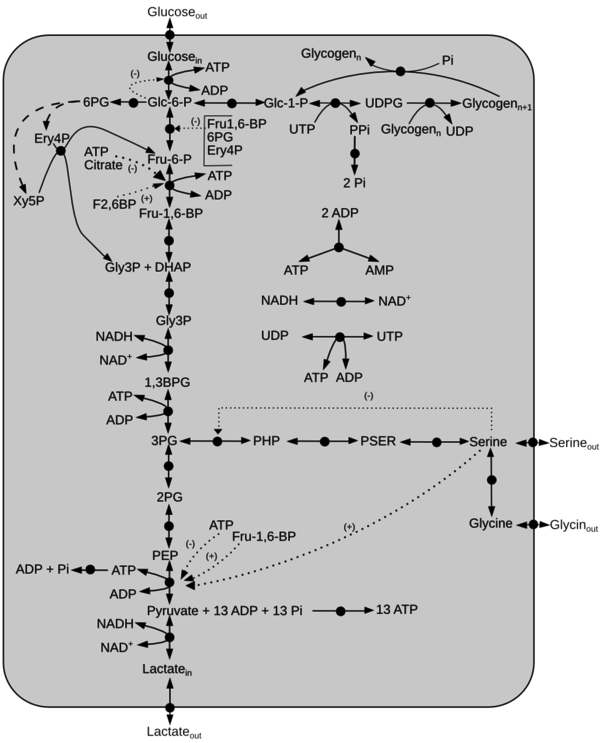Kinetic model of Central Metabolism
A kinetic model of glycolysis with serine activation is constructed from the literature data [1][2][3][4].
Description of the model
Click on a reaction to have more information
Reactions
Details of the abbreviations for this model is listed here
Initial concentration of the metabolites can be found here
Model File
Global parameters
The Vmax value in the paper "Modeling cancer glycolysis" is given in  unit [1]. To homogenize the units it is then converted back to
unit [1]. To homogenize the units it is then converted back to  by multiplying
by multiplying  with 65 as the HeLa cell was incubated in
with 65 as the HeLa cell was incubated in  .
.
References
- ↑ 1.0 1.1 Marín-Hernández A, Gallardo-Pérez JC, Rodríguez-Enríquez S et al (2011). Modeling cancer glycolysis. Biochim Biophys Acta, 1807:755–767 (doi)
- ↑ Turnaev II, Ibragimova SS, Usuda Y et al (2006). Mathematical modeling of serine and glycine synthesis regulation in Escherichia coli. Proceedings of the fifth international conference on bioinformatics of genome regulation and structure 2:78–83
- ↑ Smallbone K, Stanford NJ (2013). Kinetic modeling of metabolic pathways: Application to serine biosynthesis. In: Systems Metabolic Engineering, Humana Press. pp. 113–121
- ↑ Palm, D.C. (2013). The regulatory design of glycogen metabolism in mammalian skeletal muscle (Ph.D.). University of Stellenbosch

